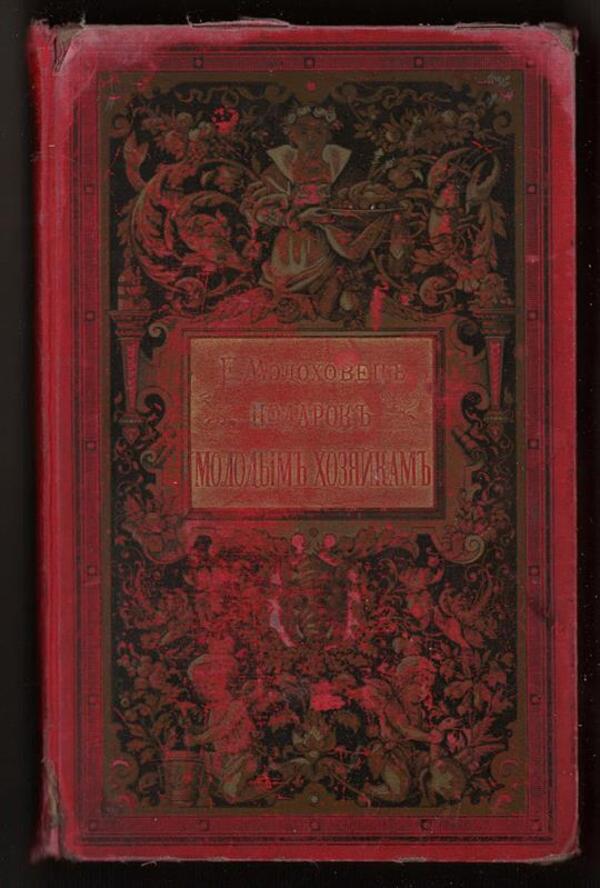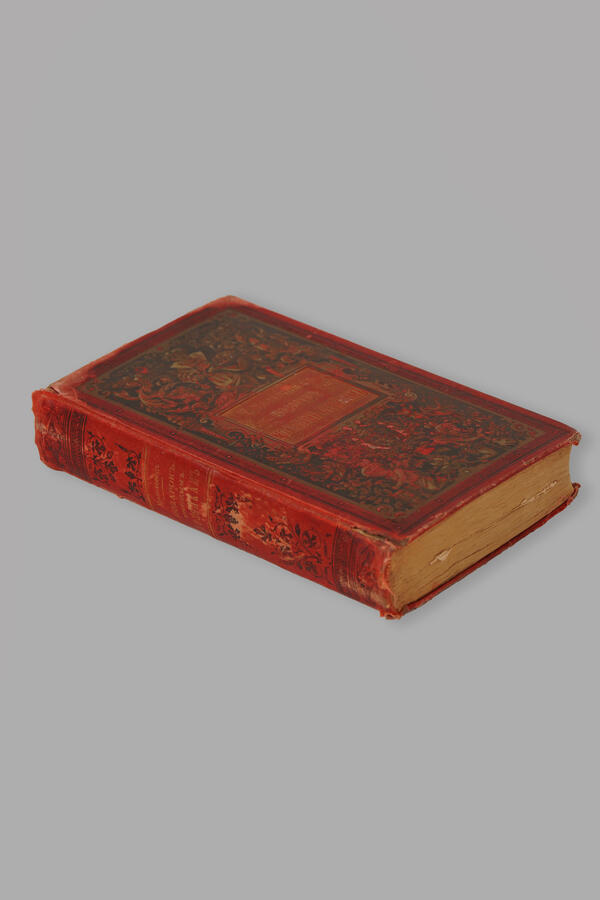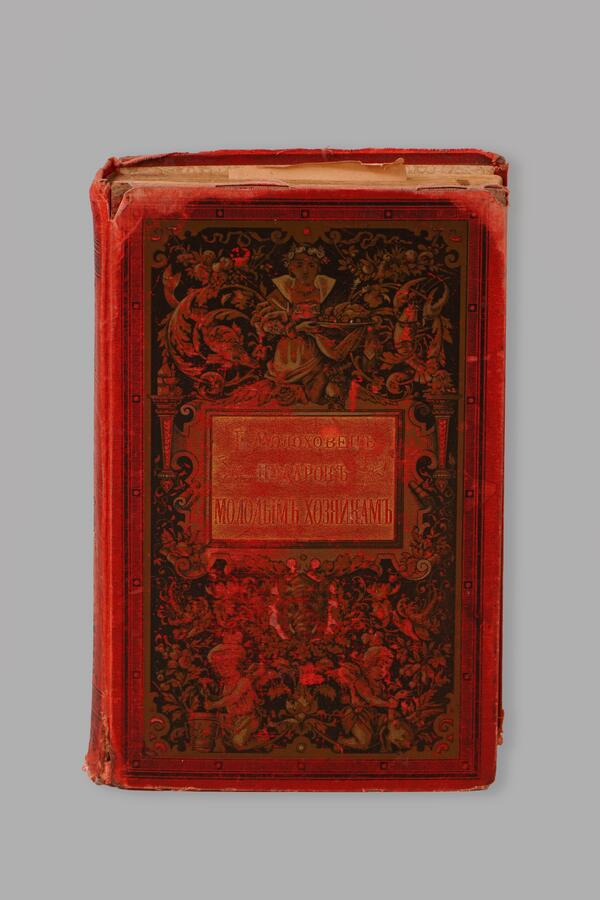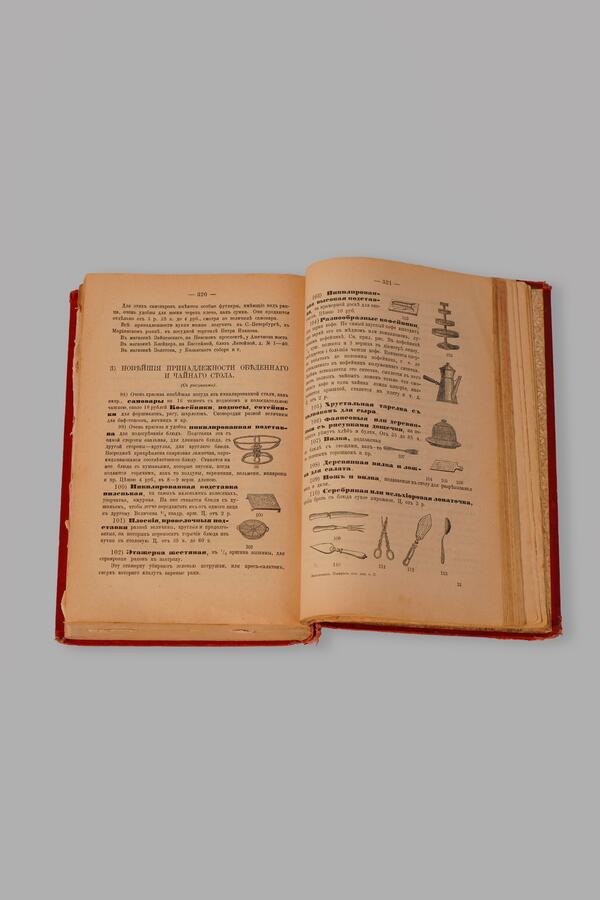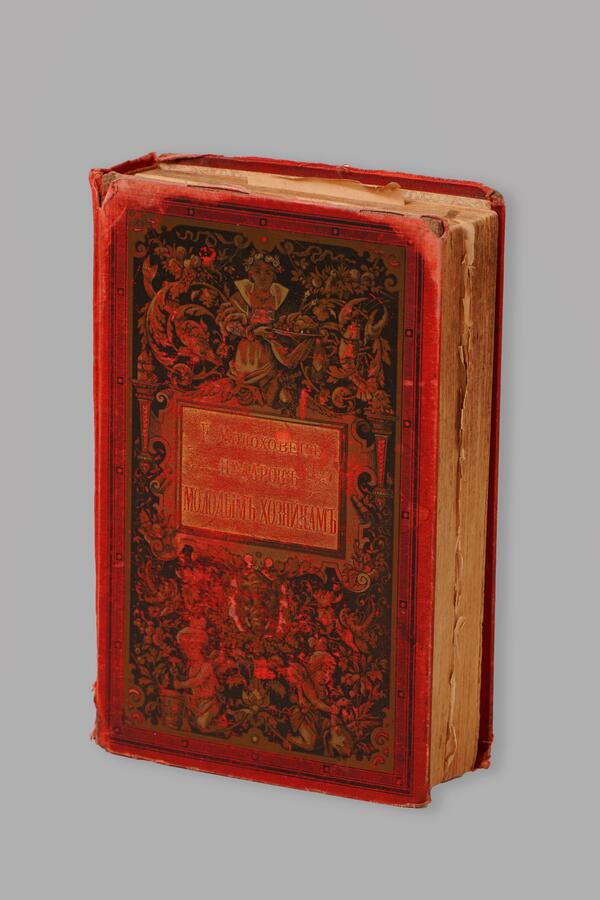In the early 1860s, nihilistic sentiments were popular in Russia, especially among young people. Few young women saw themselves as housewives: more often they dreamed of European universities, a career and emancipation. Against this background, the appearance of a book called “A Gift to Young Housewives, or a Means to Reduce Household Expenses” looked quite unexpected. Yet such a book was published in Kursk in 1861 and attracted attention, despite the modest circulation and cover.
The mysterious inscription on the title “Compiled by Mrs. E. M-ts” became the cause of speculation and rumors. Authorship was attributed either to a retired hussar, who took up housekeeping as a hobby, or to a team of culinary specialists and restaurateurs. However, “Mrs. E. M-ts” was a real woman, a graduate of the Smolny Institute, Elena Molokhovets.
Elena Ivanovna Burman was born in 1831 in Arkhangelsk. After graduating from the Smolny Institute for Noble Maidens, she married the architect Franz Molokhovets. Soon the spouses and their children moved to Kursk. Circumstances and financial difficulties compelled Molokhovets to study the intricacies of running a household. Therefore, her “Gift” was intended for the women of the noble class, but not the most prosperous. The first edition of the book contained useful tips on housekeeping and about 1,500 recipes for lean and fast, cold and hot meals for people of all ages, health and financial background.
The popular book had many successors: the “Full”, “New” and even “Real” “Gift” by Malakhovets, Morokhovets, Malkovets and others. To expose the plagiarists, Elena Molokhovets “approved” her publications with her personal signature.
The book has been published 29 times with 300,000 copies sold. Over the years, there were more and more recipes in the book. In the latest edition, their number has reached 4,500, including recipes for preserves and “stocks”. In addition, the young housewives were offered tables of measures and weights, advice on menu preparation, serving, and even on designing the apartment.
After the revolution, “A Gift” became a symbol of a bygone era for Russian emigrants. In the USSR, the Molokhovets book was considered dissident literature and was not published. Some recommendations were the norm for pre-revolutionary Russia, but in Soviet society they were perceived as remnants of the bourgeois past. Such, for example, is the instruction to give extra cracklings to “servants for porridge”. The former bestseller continued to exist only in samizdat (underground secret publications).
In the early 1990s, “A Gift to Young Housewives” was republished and reappeared on the bookshelves.
The mysterious inscription on the title “Compiled by Mrs. E. M-ts” became the cause of speculation and rumors. Authorship was attributed either to a retired hussar, who took up housekeeping as a hobby, or to a team of culinary specialists and restaurateurs. However, “Mrs. E. M-ts” was a real woman, a graduate of the Smolny Institute, Elena Molokhovets.
Elena Ivanovna Burman was born in 1831 in Arkhangelsk. After graduating from the Smolny Institute for Noble Maidens, she married the architect Franz Molokhovets. Soon the spouses and their children moved to Kursk. Circumstances and financial difficulties compelled Molokhovets to study the intricacies of running a household. Therefore, her “Gift” was intended for the women of the noble class, but not the most prosperous. The first edition of the book contained useful tips on housekeeping and about 1,500 recipes for lean and fast, cold and hot meals for people of all ages, health and financial background.
The popular book had many successors: the “Full”, “New” and even “Real” “Gift” by Malakhovets, Morokhovets, Malkovets and others. To expose the plagiarists, Elena Molokhovets “approved” her publications with her personal signature.
The book has been published 29 times with 300,000 copies sold. Over the years, there were more and more recipes in the book. In the latest edition, their number has reached 4,500, including recipes for preserves and “stocks”. In addition, the young housewives were offered tables of measures and weights, advice on menu preparation, serving, and even on designing the apartment.
After the revolution, “A Gift” became a symbol of a bygone era for Russian emigrants. In the USSR, the Molokhovets book was considered dissident literature and was not published. Some recommendations were the norm for pre-revolutionary Russia, but in Soviet society they were perceived as remnants of the bourgeois past. Such, for example, is the instruction to give extra cracklings to “servants for porridge”. The former bestseller continued to exist only in samizdat (underground secret publications).
In the early 1990s, “A Gift to Young Housewives” was republished and reappeared on the bookshelves.

